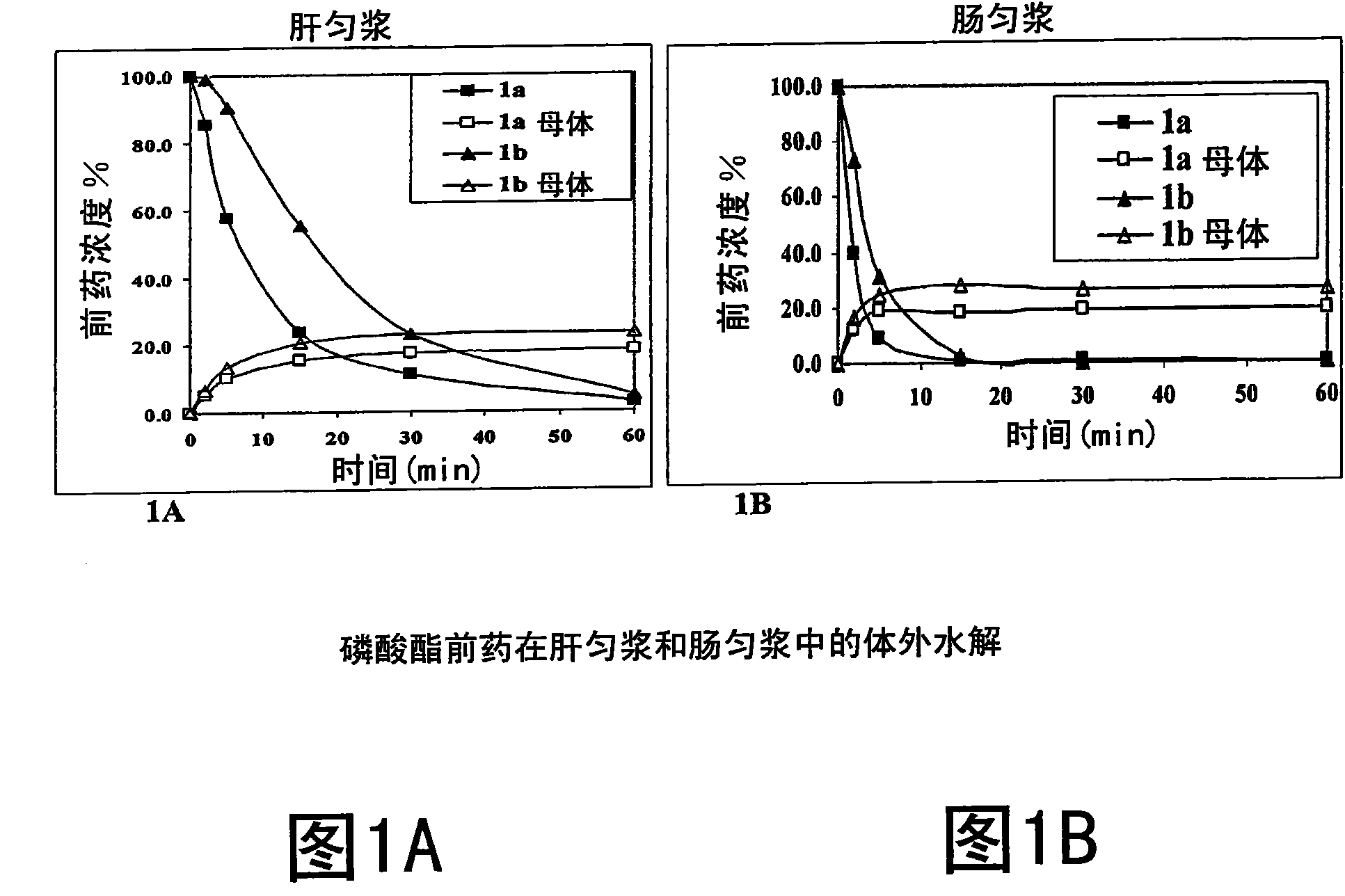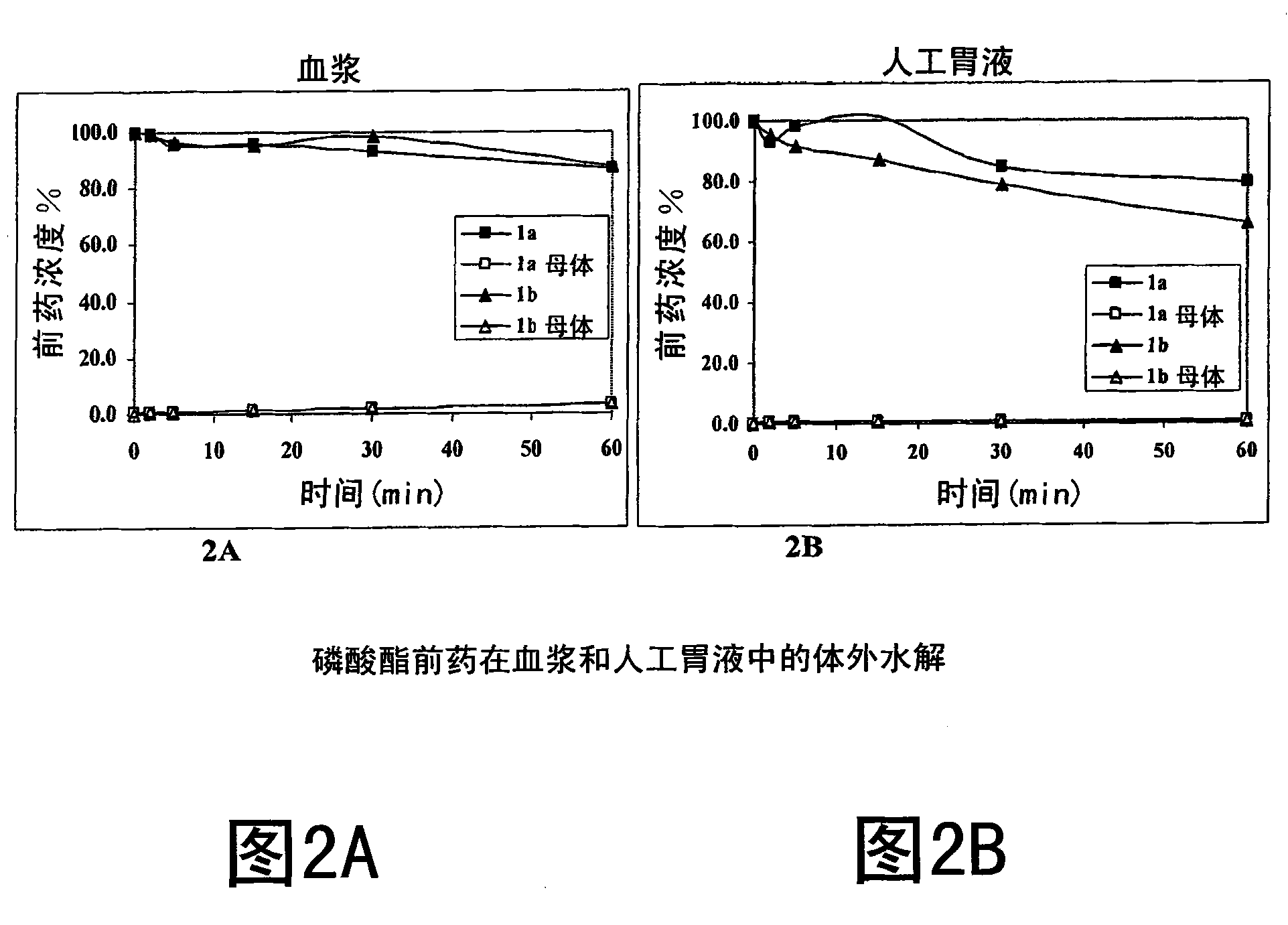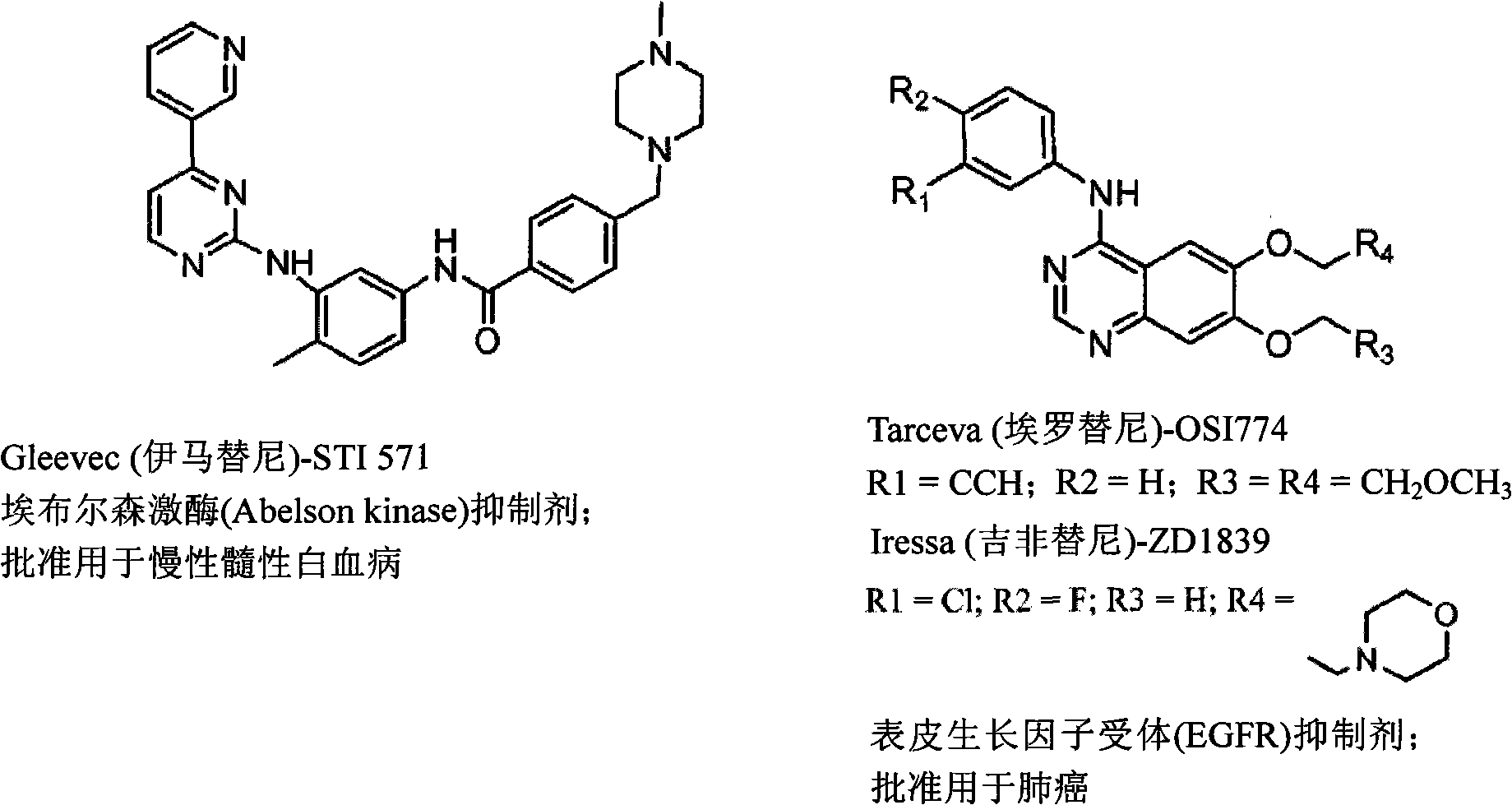Macrocyclic prodrug compounds useful as therapeutic agents
A technology for compounds and drugs, applied in the field of macrocyclic prodrug compounds used as therapeutic agents, can solve the problems of not being able to support all the work and the rationality of drug design.
- Summary
- Abstract
- Description
- Claims
- Application Information
AI Technical Summary
Problems solved by technology
Method used
Image
Examples
preparation example Construction
[0357] Compound preparation method
[0358] Modular synthetic methods can be used to prepare macrocycles in non-prodrug form (eg, active form or active form with protecting groups). Methods and procedures for the preparation of macrocycles in non-prodrug form are described in detail in International Application PCT / US2007 / 017754 and US Serial No. Serial No. 11 / 891,652, the contents of which are incorporated herein by reference in their entirety. Various prodrugs can be synthesized from active macrocycles by methods known to those skilled in the art for the preparation of prodrugs. For example, a phosphate ester of a hydroxyl group can be prepared by reacting the hydroxyl group with a phosphorylating reagent such as a phosphorus oxychloride analog. The sodium salts of all phosphonates can be obtained by treating the final compound with a basic ionic resin such as Dowex 550a.
[0359] Schemes 1, 2 and 3 below illustrate general synthetic strategies for the synthesis of diphos...
Embodiment 1
[0471] Example 1: Synthesis of para-mono-phosphoamidate compounds 10a and 10b:
[0472]
[0473] To the CH of the corresponding phenolic macrocycle 10a or 10b (1.0 2 Cl 2 To the solution were added DBU (0.9 equiv), bis(dimethylamino)phosphoryl chloride (1.0 equiv) and DMAP (catalytic amount). The reaction mixture was stirred overnight at room temperature. Then with saturated NH 4 The organic phase was washed with aqueous Cl and brine, and then washed with MgSO 4 dry. The desired monophosphates 11a and 11b were purified and isolated by column chromatography (EtOAc to 5% MeOH in EtOAc) in 50-60% yield.
[0474]
[0475] 1 H NMR (CDCl 3 , 400MHz) δ11.53(s, 1H), 11.16(s, 1H), 7.11(s, 1H), 7.06(s, 1H), 6.51(d, J=16.1Hz, 1H), 5.97(dt, J =15.6, 7.5Hz, 1H), 5.42-5.35(m, 1H), 5.32-5.28(m, 2H), 5.13(d, J=15.6Hz, 1H), 5.09-5.05(m, 2H), 4.78( s, 2H), 4.76(s, 2H), 4.37-4.33(m, 4H), 4.12(s, 2H), 4.10(s, 2H), 3.53-3.52(m, 4H), 3.42-3.41(m, 4H), 2.70(s, 6H), 2.70(s, 6H), 2.68(...
Embodiment 2
[0478] Embodiment 2: the synthesis of o-mono-phosphoamidate (ortho-mono-phosphoamidate) compound 13:
[0479]
[0480] CH of bisphenol 10a (300 mg, 0.63 mmol, 1.0 eq) 2 Cl 2 (5mL) solution was added i-Pr 2 Net (104 μL, 0.63 mmol, 1.0 equiv) and EOMCl (58 μL, 0.63 mmol, 1.0 equiv). The reaction was slowly warmed to room temperature and stirring was continued overnight. Then the reaction mixture was washed with saturated NH 4 Aq. Cl (15 mL) was washed and washed with CH 2 Cl 2 (20mL×2) extraction; then the combined organic layers were washed with brine (20mL) and washed with anhydrous Na 2 SO 4 dry. After evaporation, the residue was purified by column chromatography (eluent: petroleum ether:ethyl acetate=3:2) to obtain 165 mg of the desired mono-protected compound 12 (49%). The compound can also be obtained by selective deprotection of the EOM group ortho to the carbonyl by treatment with TFA in MeOH:THF at room temperature.
[0481]
[0482] CH to mono-EOM prot...
PUM
| Property | Measurement | Unit |
|---|---|---|
| affinity | aaaaa | aaaaa |
Abstract
Description
Claims
Application Information
 Login to View More
Login to View More - R&D
- Intellectual Property
- Life Sciences
- Materials
- Tech Scout
- Unparalleled Data Quality
- Higher Quality Content
- 60% Fewer Hallucinations
Browse by: Latest US Patents, China's latest patents, Technical Efficacy Thesaurus, Application Domain, Technology Topic, Popular Technical Reports.
© 2025 PatSnap. All rights reserved.Legal|Privacy policy|Modern Slavery Act Transparency Statement|Sitemap|About US| Contact US: help@patsnap.com



